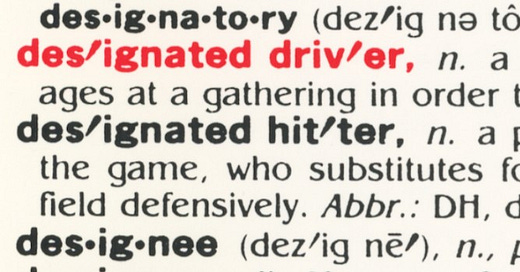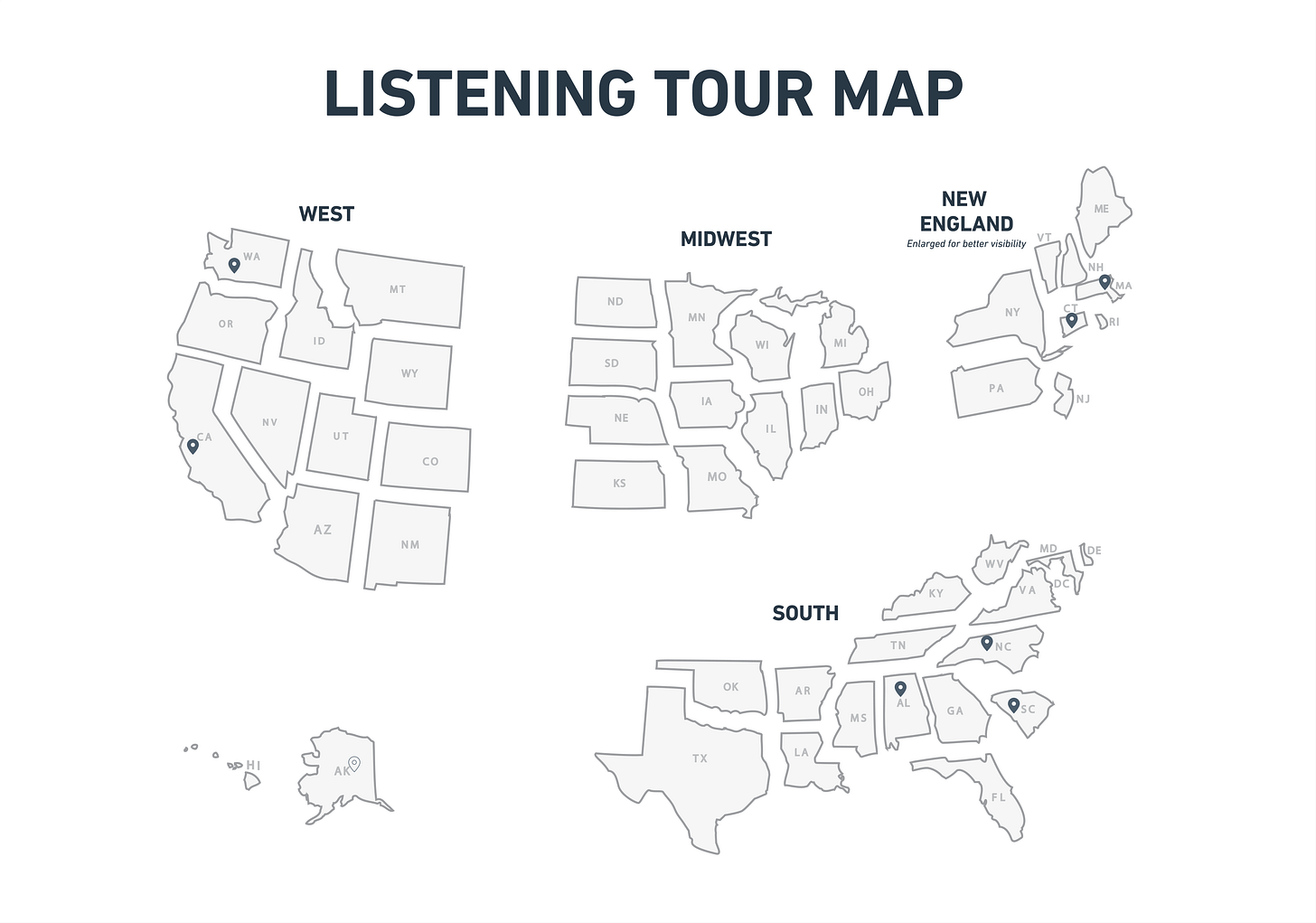What's designated driving got to do with digital thriving?
Buckle up folks, 💺, I've gone down an internet 🐰 rabbit 🕳️ hole.
I've been exploring the history of designated driving to see if we might draw inspiration from it for our work on digital thriving. It may not be a perfect fit, but is there inspiration to be found?
Why you're getting this: You subscribed! Unsubscribing is just as easy and I won’t mind. (I won’t even know. 🤫 )
In this issue: I write about the history of the term “designated driver” and how it became a social norm. I reflect on what that might teach us about digital thriving. I mention our new fellowship program, and (as always) offer up a Lewis.
THE HISTORY
The term "designated driver" was added to Webster's dictionary in 1991.

Six years prior, the term didn’t exist, at least not in the US. In 1985, Jay Winsten, the director of the Harvard Alcohol Project, visited Stockholm to understand why Sweden (and other Nordic countries like Finland, Norway, and Denmark) was world-renowned for its low levels of drunk driving-related fatalities. While he was there, he conducted fieldwork, observing everyday Swedes as they drank together or made plans to. He was amazed to discover couples negotiating who would drive (and therefore not drink at all) before going out, and pub-goers saying things like, “If I were to get drunk and drive, my friends wouldn't speak to me.”1
Things were different in Scandinavia, but there wasn’t a consensus as to why. Sweden, in particular, had some of the harshest laws for drunk driving. They were among the first in the world to use blood levels to determine inebriation, and their BAC (blood alcohol content) levels were (and continue to be) especially low (currently 0.02% compared to 0.08% in the US). When Sweden first began issuing driver’s licenses in 1916, they required a "reputation of sobriety" to be issued one. It was (and continues to be) known for its especially severe penalties for being caught driving drunk.
But the US, while less strict, had similar laws with drastically different outcomes. For example, in the 1980s, alcohol-impaired driving fatalities accounted for approximately ~40% of total traffic fatalities in the US, compared to ~3% in Sweden.
Through his fieldwork, Winsten determined that it was the culture in Sweden, more than the laws, that made the difference. He took practices like designated driving back to the US and spent the next several years launching a major mass media campaign with Hollywood studios and major television networks to socialize them.
IT WORKED
Winsten worked with over 250 producers and writers to create storylines in popular television shows and major films. Over 45 million people were estimated to have seen media related to designated driving, and polls at the time indicated that people were changing their behavior. Perhaps you've even seen one of these episodes. 👇
As a result of the campaign, drunk driving fatalities began decreasing in the US, and in six years’ time, fatalities had reached an all-time low (an overall decrease of 30%). The campaign's effects are estimated to have saved hundreds of thousands of lives since its launch, and today, designated driving is a social norm in the US, just as it was in Sweden when Winsten visited in 1985.
DESIGNATED THRIVING?
At the Center, we’re inspired by this story and actively wonder what it would look like to establish social norms that guide us toward using (or not using) tech in ways that align with our values, connect us, and contribute to our overall health and happiness.
👋 If this question sparks your imagination, sign up for the listening tour and we can think together about it. Truly, I would love to!
But it’s not cut and dry, is it? Putting aside the ways our relationship with mass media has changed in the time since that Cheers episode, the hardest thing for me about the designated driver concept is its reliance on stigma and shame as motivators. In 2017, Winsten tried to apply the lessons he learned to distracted driving (driving while looking at your phone), and he described his strategy as:
“We need to create that stigma. We need to create a sense of shame connected with the behavior of driving distracted, which doesn’t exist today.”
I’m not sure I want our work to feed stigma or shame in society at all, constructive or otherwise. And here’s the thing: drunk driving is unequivocally bad. Technology is not. We may endlessly scroll, we may socially compare, we may pacify ourselves with our devices at the slightest sign of boredom or discomfort, but technology undeniably connects, educates, and empowers, too. As we like to say at the Center, “Technology is both.” And, in all honesty, it’s more the case that it’s “everything everywhere all at once” because it’s increasingly hard to extricate “digital” from our “lives” and anyway, how it affects us varies based on our personality, personal history, and day-to-day experiences.
Also, where can we go to observe productive social norms around digital behaviors? Where’s our “Sweden?”
¯\_(ツ)_/¯
Right now, it seems impossible to find the perfect phrase that’ll remind us to shift our digital behavior in a way that feels manageable, is socially rewarding, and works for almost everyone, but I am genuinely hopeful that listening will help us get there.
We’ve added a Listening Tour question to prompt a conversation about social norms, and have already begun talking with folks about it.
Em has run a handful of listening sessions in Charleston, SC with groups of parents and teens. I’ve run a large group session at UW with undergrads, and have several virtual Zoom chats scheduled this week. The more folks we talk to, the closer we’ll get to discovering practices that’ll help us thrive.
Do you have a group that you think would enjoy being part of a listening session? We're hosting discussions with groups of ~six people. Just hit reply to this message and let me know! You can also help us drop pins all over our map by:
Sharing our project with someone you know (especially teens)
Posting about it on socials or places you feel comfy sharing
OH, AND, WANT TO WORK WITH US?
We just launched our inaugural fellowship program. Applications are due May 30th. We're looking for folks from ALL walks of life and work, not just academics, to join us in exploring digital thriving. If you want to learn more, join us for our next open lab meeting, which is this coming Monday (April 29th) at 1 pm Eastern.
p.s. You get two Lewises for the price of one this week.
Actually, the person probably said something more like, “Om jag skulle bli full och köra skulle mina vänner inte prata med mig.”








I have a "fuzzy butt" who would probably enjoy the company of "fluffy butt." :D As a lover of all things tech, I enjoyed this article!